Top 10 Classical Trekking Routes in Tibet
Tibet is an attractive place for tourists from all over the world to explore. It is home to stunning natural wonders and a vibrant Buddhist culture that resounds with irresistible charm. With the dozens of ways to experience a true Tibetan hike, the following route is widely considered the best for enthusiastic travelers. Ready to hit the road? Here are the top 10 classic hiking routes in Tibet:
1. Gama Valley Trekking, Shigatse (10-15 Days)
2. Mt. Kailash Trekking, Ngari (2-3 Days)
3. Namtso Lake trekking, Damxung (7-10 Days)
4. Lhasa--Tsurphu Monastery--Yangpachen (2-3 Days)
5. Lhasa--Ganden Monastery (Gyama Valley) --Chimpuk--Samye Monastery (4-5 Days)
6. Xiazayü (Chawalong Town) --Gongshan, Yunnan (Bingzhongluo Town) (20-25 Days)
7. Motuo Trekking (5-7 Days)
8. Sai Town (Lhozhag County, Shannan prefecture) --Baimalintso (1-2 Days)
9. Dezhong Hot Spring (Maizhokunggar County) --Drigung Thil Monastery (1 Day)
10. Zhari Kora--Cuoga Lake (3-5 Days)
The following is a detailed introduction of the top 10 classic hiking routes in Tibet:
1. Gama Valley Trekking, Shigatse (10-15 Days)
Located in the Tingri county of Shigatse, Gama is a lush valley carved by melting rivers and countless nearby mountains. Back in the 20th century, it was known as "the most beautiful valley on earth and one of the most classic hiking routes in the world".
The entire trail is within the Everest nature reserve. Gama Valley is rich in rare plants, wild animals and amazing wetlands, waterfalls and lakes. In addition, the Sherpas who were born here also live here, and you may find it is interesting to chat with them in the background of Mt. Everest, Mt. Lhotse and Mt. Makalu. Highlights:
You can admire the majestic Himalayan Mountains, experience rare plants and wildlife in the Gama Valley, and learn about the legends of Sherpas.
Challenges along the way:
For most hikers, the Valley's elevation changes dramatically and its climate is variable. It is recommended only for the well-trained and experienced hikers.
2. Mt. Kailash Trekking, Ngari (2-3 Days)
When it comes to hiking in Tibet or trekking around the sacred mountains (around religious mountains or religious sites), Mt. Kailash trekking is undoubtedly the most common in people's minds. Throughout Asia, stories exist of a great mountain, the navel of the world and is worshipped in Hinduism, Jains and the Bon religion. It is said by Tibetans that circling the mountain once will wipe out the sins of a lifetime, while 108 circuits guarantees instant nirvana. For those Indians who make the long journey from India to Mt. Kailash, they believe that an Indian should come here at least once in his life. Then they will trek around the sacred Mt. Kailash and bathe in the Lake Manasarovar. In this way, they can wash away their sins. A small number of them will even die while trekking Mt. Kailash, which is not sad for them, but considered an ideal ending.
Highlights:
While hiking, you can enjoy the beauty of Mt. Kailash and Lake Mansarovsk, and experience the rich religious atmosphere that proves how strong your body is.
Challenges along the way:
Mt Kailash poses a formidable challenge to traveler's physique and endurance. The average elevation of the route is 4,700 meters, and it can reach 5,630 meters in the Drolma La pass. In such places, the climate is constantly changing and unpredictable. Therefore, it is dangerous for the new arrivals to travel to the Ngari Region. Tips:
July and August are the Kora season for most pilgrims. Hikers can follow up the footsteps with the help of a tour guide to avoid getting lost.
It usually takes two to three days of trekking around Mt. Kailash. For the infirm, however, it may take a few more days.
3. Namtso Lake trekking, Damxung (7-10 Days)
The sacred mountains and holy lakes surrounding Tibet are believed to be a way for pilgrims to express loyalty and worship to the Tibetan gods, as well as a unique Buddhist practice. Known as the holiest lake in Tibet, Namtso lake attracts a large number of tourists and pilgrims every year. In Tibetan language, “Nam”means “Heaven” and “Co”means the “Lake”. In the early years, Mongolian soldiers were stationed in northern Tibet, thus the Mongolian language is "Tengri Sea", which also means "Heavenly Lake". Namtso Lake, located in central Tibet, is the second largest saltwater lake in China and the highest giant lake in the world.
According to legend, Namtso is the main protector of the sheep, so every year of sheep in Tibetan calendar Namtso Lake will open the holy gate to welcome the gods to come together. Therefore, from the first month till the twelfth month, the pilgrimage hiking around the lake goes on all the year round. Among them there are both riding horses and on foot, all men and women, old and young are making a pilgrimage around the lake to gather for accumulating blessings and bring themselves unlimited blessings as well. Driven by such mentality, the believers went all the way to trek the lake day and night, and believed that the faster of the trekking, the higher the merit they may gain in future life.
Highlights:
During the hiking tour of Namco lake, you can enjoy the charm of Namco Lake and taste the extensive and profound Tibetan Buddhist culture.
Challenges along the way:
It is one thing to get to Namtse, but quite another to trek round it. Due to its high altitude and long distance, it takes at least one week to hike around Namtso Lake.
Tips:
1. To trekking around the lake, it takes about 280km along the shoreline and 320km along the simple highway. Hike the whole distance, may cost 7 to 10 days depending on physical condition.
2. Driving around the lake requires high off-road performance of vehicles. There are many roads along the lake, have to guide by local Tibetan and takes about 1 – 2 days.
3. The hiking around the lake must be well adapted to the plateau in Lhasa, because Namco is nearly 5,000 meters above sea level. Outdoor equipment must be well prepared, especially for rain protection. It takes about 8-10 days to turn around the lake for those with good physical strength, and about 15 days for the weaks.
4. Namtso is a salt-water lake, and the supplies on the way are very poor, including water and other materials, which need to be fully prepared. Yaks and horses to carry the heavy loads need to be prepared and reserved in advance in Banguo County.
5. Route: departure from Lhasa to Namtso and stay in Tashi Peninsula, then hike around Tashi Island and Chakpori (in Tashi Island must hike with odd number, in Tibetan custom is to turn Tashi Island with 13 circles, then turn the Chakpori according your age: how old you are, then turn the same circles, the direction is clockwise). In the East of Tasi bath door can wash your face, you can throw coins into the Namtso Lake and offer Hada.
6. Due to the high altitude, you'd better prepare some emergency capsules for altitude sickness just in case
4. Lhasa--Tsurphu Monastery--Yangpachen (2-3 Days)
This hiking route was well built and has been going for years. It enjoys a high reputation among the 20 classic hiking routes in China. Tsurphu Monastery founded in 1187 by Dusum Khyenpa, some 40 years after he established the Karma Kagyu order in Kham, his birthplace. It was the third Karma Kagyu monastery to be built and, after the death of the first Karmapa, it became the head monastery of the order. “Tsurphu”in Tibetan language means numerous, which also refers as “the flying Monatery”, as the legend mentioned that the Tsurphu Monastery was coming from India by fly. Another saying was: when Düsum Khyenpa, 1st Karmapa Lama pass this place, he thought it was a treasure place, so he decided to build the Tsurphu Monastery. After the end of the Tubo Dynasty, the Kagyu ruled Tibet for a hundred years. The Kagyu sect also has the largest number of branches in Tibetan Buddhism, with four major branches and eight minor branches. It is said that the majority of Tibetan Buddhists in Europe and America are out of the Kagyu sect.
Yangpachen hot spring is famous for its abundant geothermal resources and hot spring resort. This is a good place to refresh yourself after a long journey.
Highlights:
Learn about the history of the Kagyu sect of Tibetan Buddhism, experience the nomadic landscape of Damxung and enjoy the breathtaking hot springs on the plateau.
5. Lhasa--Ganden Monastery (Gyama Valley) --Chimpuk--Samye Monastery (4-5 Days)
This hiking route is a real religious route. After the hike, you may gain a basic understanding of the development of Tibetan Buddhism. Ganden was the first Gelugpa monastery and has been the main seat of this major Buddhist order ever since. The monastery was founded in 1409 by Tsongkhapa, the revered reformer of the Gelugpa order, after the first Monlam festival was performed here.
Samye Monastery is the first Buddhist temple in Tibet, where monks and nuns were selected from theTurpan nobles and taught sutras here. Therefore, Samye Monastery is the first comprehensive Monastery in Tibetan history that integrates traditional Buddhist sculpture, ancient Buddhist sutras and monk's residence.
Chimpuk is located about 10 kilometers northeast of Samye Monastery on the Narui mountainside, 4,300 meters above the sea level. It is an ideal place for summer and winter as it is neither hot in summer nor cold in winter. Chimpuk Practicing Cave was surrounded by mountains, the Yarlung Tsangpo River is located at the south of the valley, the Practicing Cave is a cluster of sacred caves northeast of Samiyah, and you may follow the footprint of great Rinpoche Master and have retreated here. “Chim” symbolized the Chim family and “Puk” means the upper of the valley. The valley of Chimput demonstrated "Concave" shape, surrounded by mountains on three sides and the south is gradually open mountain slopes and the broad Yarlung Tsangpo River. Along the valley is the bare gray mountain, only the green bushes strongly grow among the Chimpuk Valley.
Highlights:
You can learn about the history of Tibetan Buddhism, explore the meditations of Rinpoche (An eminent monk of practice), and enjoy the idyllic scenery of Gyama Valley. There is a similar route: it is departing from the Gyama Valley of Maizhokunggar, through the Chimpuk, reach to Samye Monastery. In the middle of this route is Gyama Valley where is the birthplace of the greatest Songtsen gampo in the history of Turpan. What a special experience it is to be able to hike into the Gyama valley where Songtsen gampo was born!
Tips:
Along this hiking route, it is also one of the four sacred Hermitages of Tibetan Buddhism and the most famous of Padmasambhava's many Buddhist caves in Tibet. If you travel here in summer, you will be amazed at how beautiful and charming the pastoral scenery is.
6. Xiazayü (Chawalong Town) --Gongshan, Yunnan (Bingzhongluo Town) (20-25 Days)
The trail covers part of the famous Ancient Tea Horse Road (ancient commercial trail). The scenery is so good that just Kawagarbo Peak (Meili Snow Mountain) can impress people for several days. Rich in history and countless stories, just the Deng tribe will brings you unlimited reverie. The Deng people (or Dengba) are not officially recognized by the government of the People's Republic of China. They live in nine villages in Tibet's Zayu County and virgin forest areas between the Himalayas and the Hengduan Mountains at an elevation of 1000 meters. To this day, there are still a few caravans have traveled this road.
Highlights:
You can appreciate the natural scenery and discover the subtle connection between economic development and cultural prosperity.
Tips:
For years, only the horses have trekked this long and challenging route. It will take at least a month to complete the journey. In addition, you'd better be physically strong, have enough time and financial backing, plus a good guide and proper time to sustain the trek.
7. Motuo Trekking (5-7 Days)
Motuo is the last county where the Yarlung Tsangpo River flows through China before it enters India, and it is the most remote with hard way in Southeast Tibet. "Motuo" means "flower", just like "meiduo"in Tibetan language. With the average altitude of 1,200 meters, the terrain of the north high and south low, surrounded by mountains, shaped like a lotus. Ya jiang from the foot of namjagbarwa sharp turn straight down, from north and south longitudinal. The Yarlung River sharp turn straight down from the foot of Namjagbarwa, runs through the North and the South. For its mystery and sanctity, it is known to Tibetan Buddhists as "Baiyu Baima Gang" -- the secret holy place of lotus flowers. Once the only county in Tibet that not accessible by highway, since 2013 it has been accessible to hikers. The hike in Motuo will take about a week. Unfortunately, it is not open to foreign tourists at present.
Highlight:
In Motuo, you can enjoy the unspoiled natural scenery and if you lucky enough may find the rare snow lotus. Within the territory of the magnificent Nanjiabawa Peak and Gyala Peri Peak, these are the highest two peaks of the Eastern Himalayas Range, the peak top covered with the perennial white snow, formed a sharp contrast with the growth of tropical and subtropical plants in Southern slope of the mountain. The Yarlung Tsangpo rises roaring between two peaks, splitting a ravine of more than five thousand meters deep between them.
Challenges along the way:
The pristine terrain and tough environment are challenging and risky for the entry-level hiker.
You must climb the snowy mountains and cross the marshes. Never venture into Motuo without adequate preparation and an experienced guide.
Tips:
Motuo is the communities of Moinba and lhoba ethnic. All the supplies in the county are carried by labor over the mountains. From the outside of the mountain to Motuo, it is necessary to climb a peak of more than 4,300 meters and then descend to a valley of more than 600 meters. You can experience the four seasons through the mountain trek, and feel the frigid zone, Variable zone and torrid zone in one day. All the dangers of the route could be overcome only by your own legs.
8. Sai Town (Lhozhag County, Shannan prefecture) --Baimalintso (1-2 Days)
The Sai Tone in Lhozhang County is famous for its Saika Gutuo Temple, the Kagyu originates from here. You can find the nine-story tower, which is said to have been built by the Jetsun Milarepa. According to legend, when Jetsun Milarepa heard that the great translator (mainly translated Buddhist scriptures), Master Malba was very proficient in the Dharma, so he came for mentorship. In order to test him, Master Malba ordered Mirariba to build a nine-story tower for his son. In order to build the tower, it is said that the back of Milarizhba was ground with bones, and spent few years time. Finally, Mirariba obtained Master Malba’s mercy, and take him as apprentice in his devotion to the Buddha, and unremitting efforts.
Baimalintso, located at the foot of the sacred Mt. Kula Kangri (7,538 meters), is a well-known tourist destination in the Shannan region. According to the legend, if you have the fate to come here, you can see your past life from the water reflection.
Tips:
Because the hiking trail is at a relatively low altitude (about 3,700 meters), it is much easier for most travelers to get there. If you feel tired, you can enjoy the magnificent scenery and rent horses from local people.
9. Dezhong Hot Spring (Maizhokunggar County) --Drigung Til Monastery (1 Day)
The hiking trail is quite relaxed and easy to arrange. You may have a chance to enjoy Dezhong Hot Spring, which is one of the most famous hot springs in Tibet. In addition to its magical effects, there is the primitivism of Dezhong Hot Spring. The pilled up with stone, regardless of men and women, just joint with the combined hotspring, it is no exaggeration to call it -- "hypaethral bath". It is said that Dezhong Hot Spring has therapeutic effects on skin diseases and minor injuries At the same time, another thing that worth to explore in Drigung Til Monastery is the celestial burial ceremony. Drigung Til Monastery is the main monastery of the Kagyu Sect, located 70 kilometers northeast of Maizhokunggar County by the Xuerong river. Its magnificent architecture and long history were impressed. What people hear the most from this Monastery is the mysterious celestial burial, in which the cropse were cut into pieces and fed to vultures. Located on a hill at the back of the Drigung Til Monastery, it is the world's second largest celestial burial place, also known as the Drigung Altar City. It is said that the soul can go to heaven directly when celestial burial is held here. All Tibetan Buddhism believers regard Drigung Til Celestial Burial Platform as the ideal place for holding Tibetan rites. It is believed that this is the best way to give your flesh to other creatures.
Tips:
Celestial burial is not open to tourists because it is taboo in Tibet.
10. Zhari Kora--Cuoga Lake (3-5 Days)
Zhari sacred mountain is one of the most famous sacred mountains in Tibet.
According to the Lunar calendar, the year of the monkey is a cycle of 12 years, and the month of the horse is also a cycle of 12 months. Imagine the probability of "Horse month in the year of Monkey". There is another saying among Tibetans, "the year of the Horse rotating mountains, the year of the Sheep rotating lakes, and the year of the monkey rotating forests. The mountain here refers to Mt. Kailash, and the forest were pointed to Mt. Zhari, if you missed the Zhari Kora on the Horse month in the year of the Monkey, you shall wait another 12 years.
Zhazri sacred mountain belongs to the monkey. Every year of the monkey, there are many believers from different sects who are traveling far from domestic and overseas for pilgrimage. They believe: the Mt. Zhari kora would bring much more merits compared with other years. Put religion aside, the natural scenery here cannot simply be described as "beautiful".
Tips:
Cuoga Lake is located in between the village of Zhari and Yumai in the southern region of Lhunze County, near the "McMahon line". Like Mt. Kailash, this mountain is also a sacred mountain of Tibetan Buddhism, Hinduism, Jainism and Benzoic. It is called the way-place of Chakarasamvara.
It is the Holy Lake for Karmapa (the oldest living Buddha history and most reincarnated living Buddha system. Inferior to Panchen and Dalai, yet the highest living Buddha of the Kagyu Sect. In the legend, it has been described as the place where the flying goddess lives. Geographic, combined of sacred mountains and holy lakes, provided the best views you cannot imagine. In addition, the hiking distance is not very long, only takes 4-5 days.





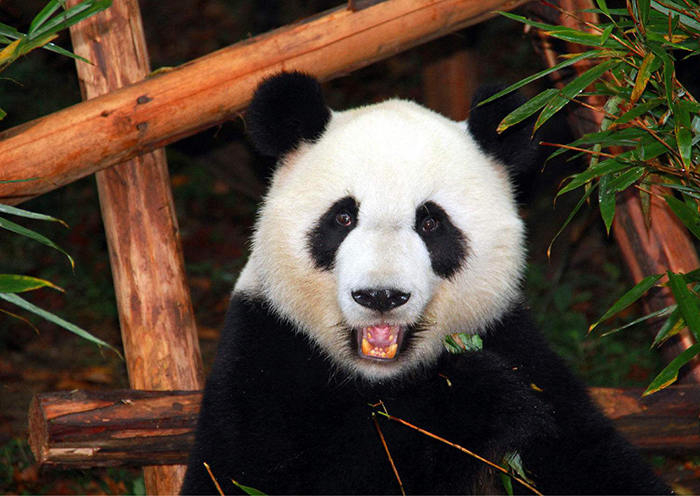
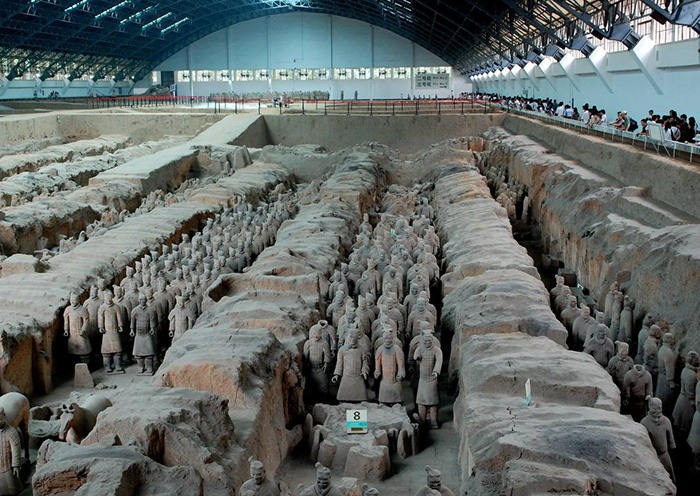
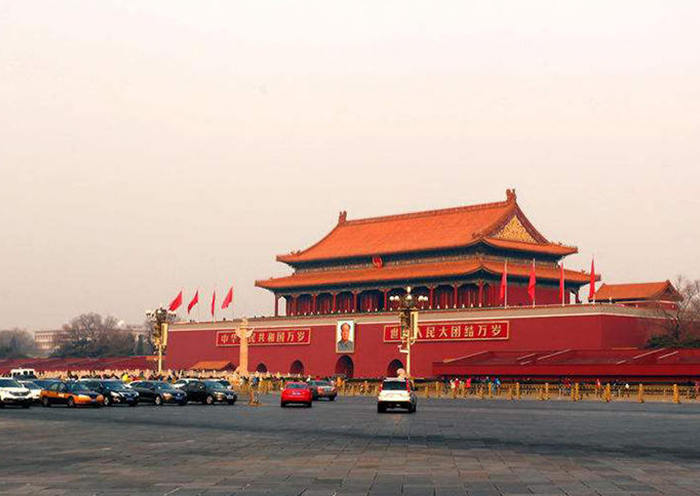
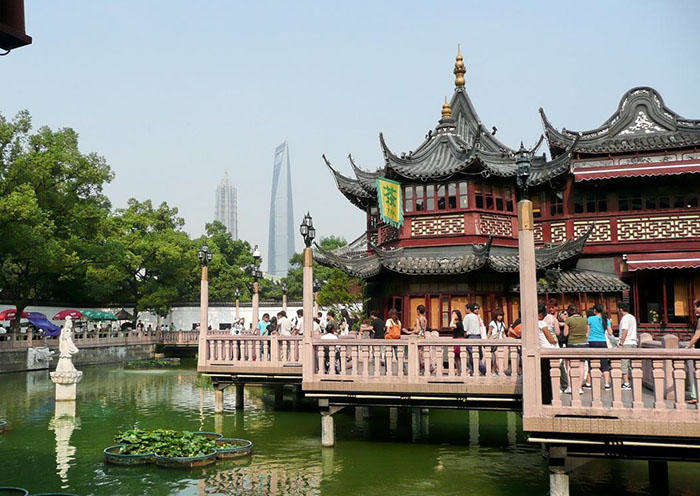
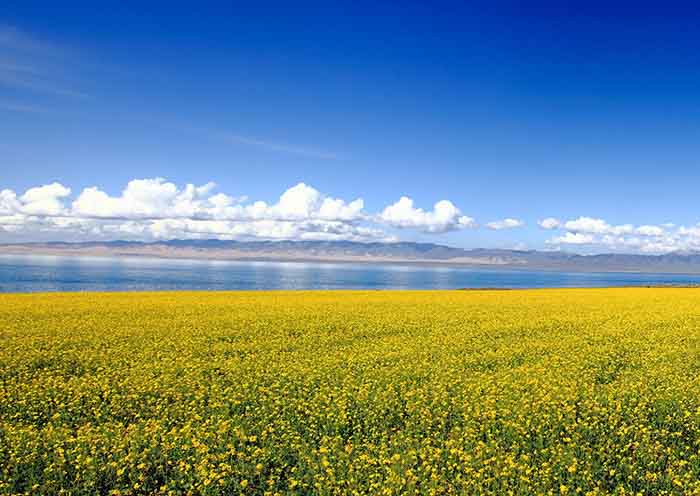
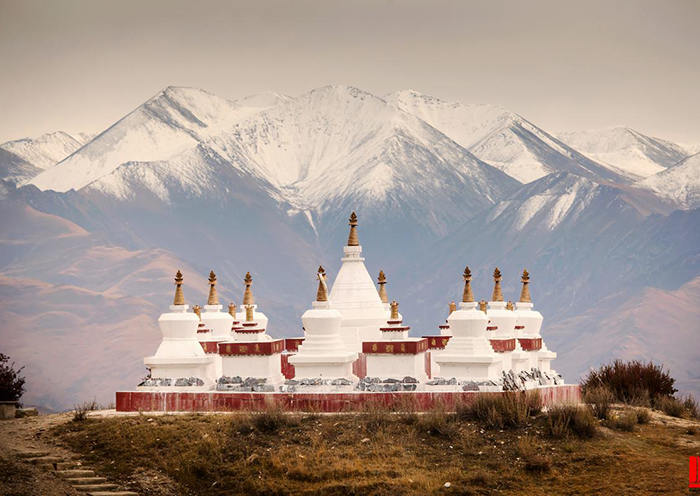
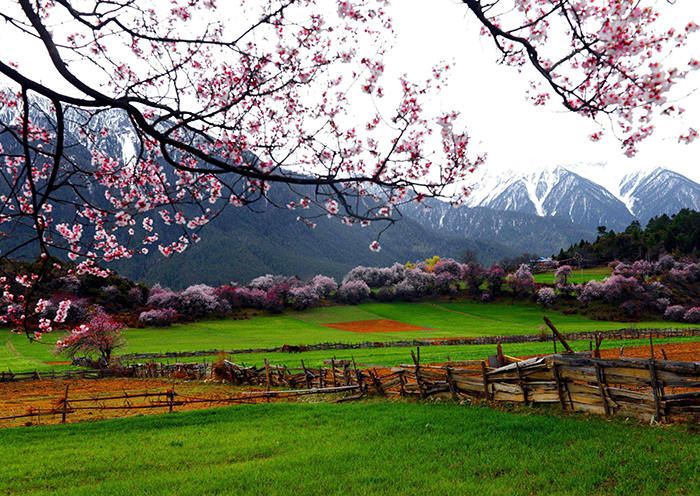
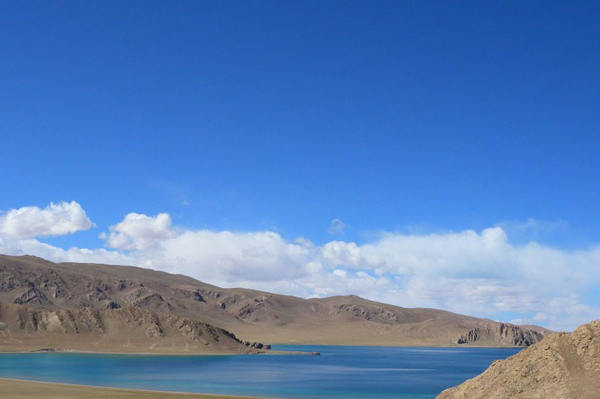
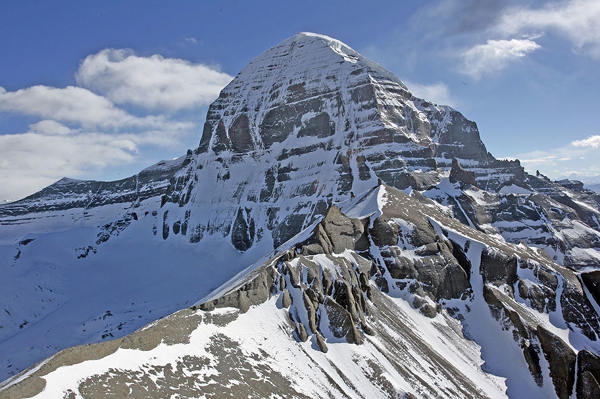

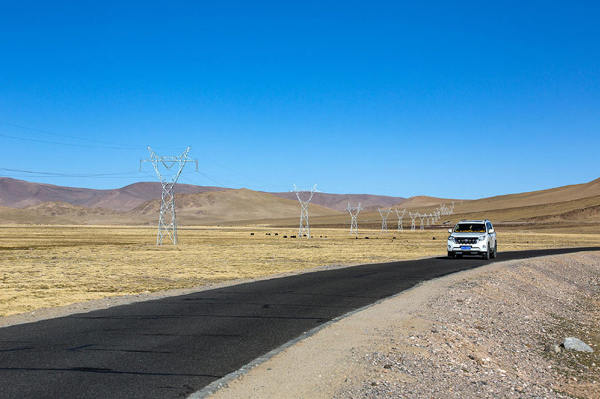



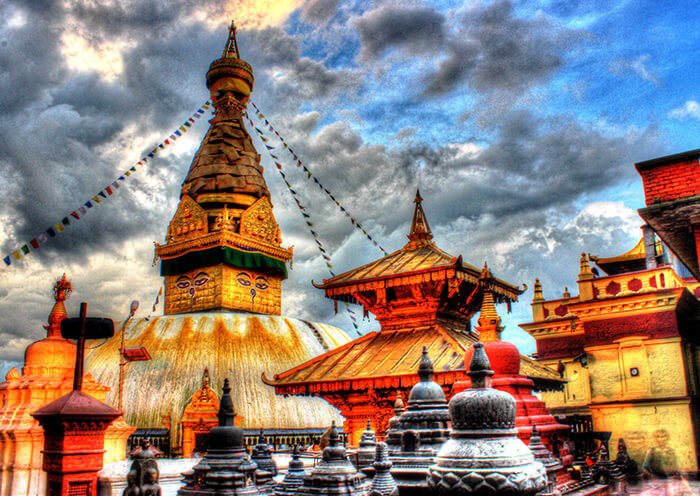
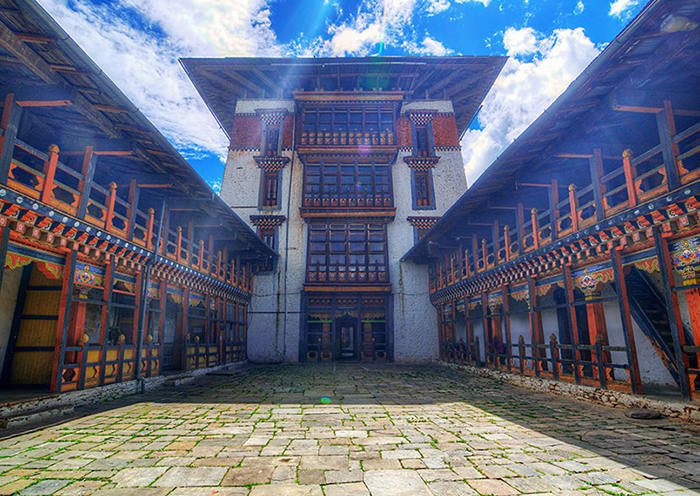
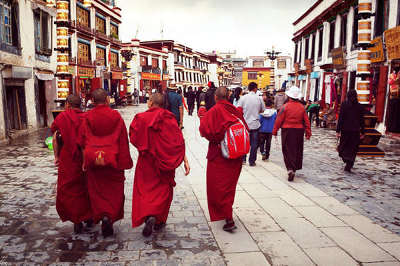


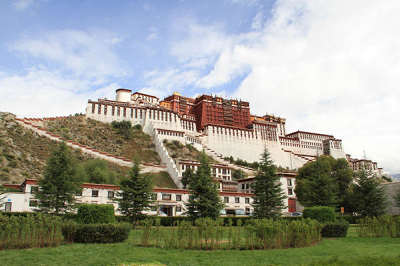



 Data in submission...
Data in submission...